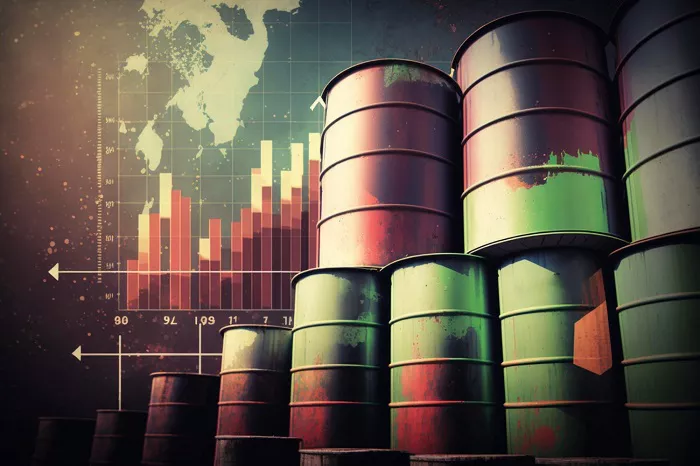Oil prices showed little movement on Wednesday following a decline the previous day, as a drop in U.S. crude inventories and expectations of supply disruptions from sanctions on Russian tankers provided support, despite forecasts for weaker global fuel demand.
Brent crude futures increased by 2 cents, reaching $79.94 per barrel by 0205 GMT, recovering slightly after a 1.4% drop in the prior session. U.S. West Texas Intermediate (WTI) crude rose 12 cents, or 0.15%, to $77.62 per barrel, following a 1.6% decrease.
Prices had fallen on Tuesday after the U.S. Energy Information Administration (EIA) projected that oil would face pressure in the next two years due to supply outpacing demand. However, Wednesday’s market found support from a decrease in U.S. crude stockpiles, as reported by the American Petroleum Institute (API), and expectations of potential supply disruptions following U.S. sanctions on Russian oil producers and their “shadow fleet” of tankers.
“Oil prices are trading firmer in early morning trading in Asia today after API numbers showed that U.S. crude oil inventories fell more than expected over the last week,” said analysts from ING.
While crude oil stocks in Cushing, Oklahoma, the delivery point for WTI futures, increased by 600,000 barrels, the overall inventories remain historically low. The API reported a 2.6 million-barrel drop in U.S. crude oil stocks for the week ending January 10. Gasoline inventories rose by 5.4 million barrels, while distillate stocks climbed by 4.88 million barrels.
A Reuters poll predicted that U.S. crude stockpiles decreased by around 1 million barrels for the same period, with the official report from the EIA expected later Wednesday.
The EIA’s latest report forecasts a decline in Brent prices to an average of $74 per barrel in 2025, down 8% from current levels, and further to $66 per barrel by 2026. WTI prices are expected to average $70 in 2025, with a further drop to $62 in 2026.
Global oil demand is expected to average 104.1 million barrels per day in 2025, slightly down from the previous estimate of 104.3 million bpd, with supply projected at 104.4 million bpd for the same year.
Related topics:
Japanese Yen Strengthens for Third Consecutive Day Amid Risk-Off Sentiment
USD/INR Weakens Ahead of Indian CPI Inflation Data Release
Asian Markets Brace for Volatility Following Strong US Jobs Report and Rising Bond Yields


